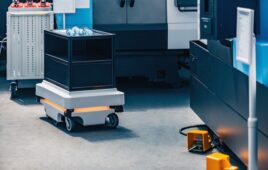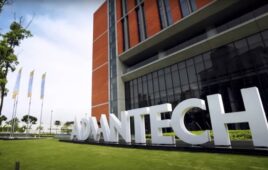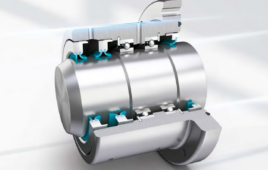Wireless sensor-based irrigation systems can offer significant benefits to greenhouse operators. Advances in sensor technology and increased understanding of plant physiology have made it possible for greenhouse growers to use water content sensors to accurately determine irrigation timing and application rates in soilless substrates. The wireless sensor systems provide more accurate measurements of substrate moisture than qualitative methods, and can save irrigation water, labor, energy, and fertilizer. The authors of a report published in HortTechnology said that the use of sensor-based irrigation technology can also accelerate container and greenhouse plant production time.
Erik Lichtenberg, John Majsztrik and Monica Saavoss reported on a study they designed to determine an optimal formula for ascertaining the true profitability of precision irrigation systems. “Sensor-based irrigation systems substitute capital for water and associated inputs such as energy, labor, and fertilizer,” the authors explained. “When benefits and costs accrue at different points in time, calculating profit–or, indeed, comparing them in any way–requires putting benefits and costs on a common time footing.”
The researchers designed a methodology for calculating profitability taking differences in timing into account, and then applied the methodology to data from gardenia production in a Georgia nursery. “The most convenient method (of calculating profitability) is converting all revenues and costs to constant periodic payments; e.g., annualizing them,” they explained. “We began by discounting all revenues and costs to convert them to their present values. We then calculated the present value of profit, which we converted to a constant annual payment (or loss). Finally, we calculated profit (or loss) per unit area to permit scaling up or down.”
The scientists found that controlling irrigation using data from moisture sensors led to substantial reductions in both production time and crop losses. “The weighted average time from planting to sale was over one-third lower, while crop losses were reduced by 50%,” the authors noted.
Calculations showed that annualized profit under the wireless sensor system was over 1.5 times more than under the nursery’s standard practice, and that most of the increase in profit was attributed to a reduction in production time.
Lichtenberg, Majsztrik and Saavoss concluded that, even if efficiency gains are not as high as those in the study, controlling irrigation using wireless sensor systems is likely to increase profitability substantially. They added that wireless sensor systems can have environmental benefits as well as the economic benefits shown in the study. “The design and conduct of the experiments used in our analysis prevented us from estimating potential environmental benefits, but this technology clearly has promise as a win-win combination of economic and environmental improvements,” they said.
Filed Under: Industrial automation




